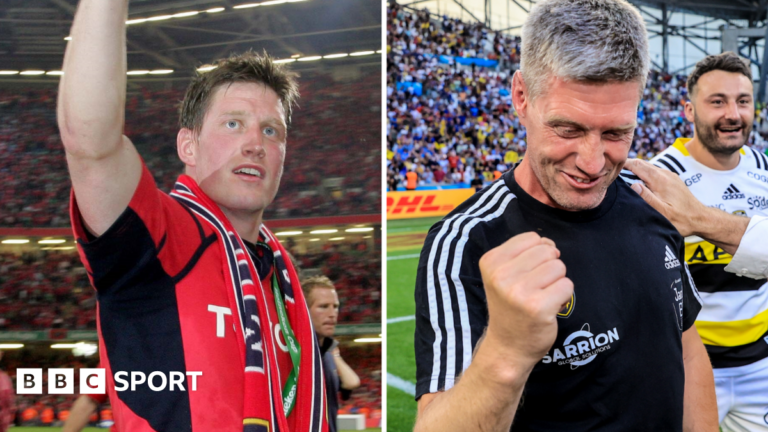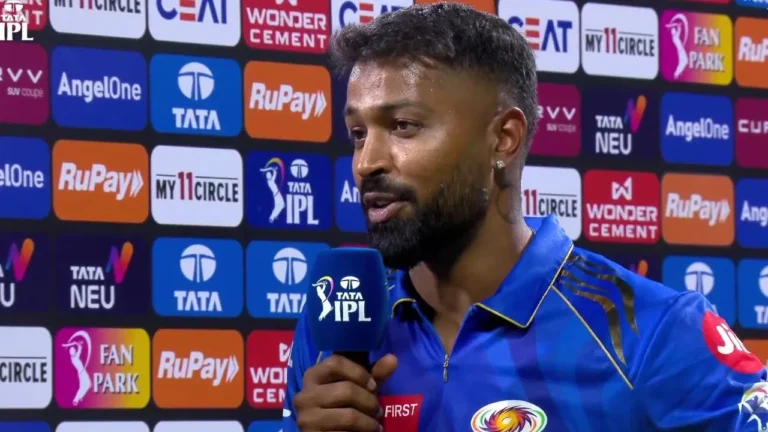

As you might expect from a team that set a record for futility with 121 losses last year, then traded its ace over the winter, the White Sox did not enter this season with a powerhouse rotation. In fact, according to our Positional Power Rankings, Chicago is projected to have the second-worst starting pitching in the majors, ahead of only the A’s. Yet that rotation has already earned a spot in the history books, as the South Side starters have yet to allow an earned run through the season’s first four games.
Admittedly, the word earned is a load-bearing one in that last sentence. But in becoming just the fifth team to pull off this feat in the 113 years since earned runs became an official statistic, Chicago’s unlikely accomplishment is worth noting, a fluky and probably fleeting performance that has at least earned its run in Small Sample Theater, particularly given the circumstances surrounding it. I’ll get to those, but first let’s meet the company the Sox are keeping:
Rotations That Didn’t Allow an Earned Run
Through the Team’s First Four Games
| Team | Season | IP | H | UER | BB | SO |
|---|---|---|---|---|---|---|
| Red Sox | 1914 | 35.0 | 21 | 5 | 7 | 20 |
| Brewers | 1976 | 29.2 | 14 | 0 | 7 | 11 |
| Giants | 2013 | 26.0 | 12 | 2 | 11 | 22 |
| Blue Jays | 2019 | 24.0 | 9 | 0 | 9 | 28 |
| White Sox | 2025 | 23.0 | 11 | 2 | 8 | 19 |
SOURCE: Baseball-Reference
That’s not a particularly heralded bunch of teams, at least outside of the 1914 Red Sox, who went 91-62 and finished in second the American League. Their season-opening rotation included Dutch Leonard, who still holds the AL record with a 0.96 ERA; in July, they added a 19-year-old lefty named Babe Ruth. The other three predecessors finished below .500, and not by a little; the Giants went 76-86 between championship seasons, the Brewers 66-95, and the Blue Jays 67-95. Even so, they all caught lightning in a bottle during the season’s first week, as have the White Sox, who are 2-2. Last year, they didn’t notch their second win until their 11th game.
Recall that one of the few bright spots for last year’s White Sox was Garrett Crochet, a 2020 first-round pick who spent parts of his first three seasons in the bullpen, interrupted by Tommy John surgery. Moved to the rotation for the first time since beginning his professional career, last season he made a full complement of 32 starts, struck out 209 hitters in 146 innings (the team was very careful about his workload), posted a 3.58 ERA and 2.69 FIP, tied for third in the AL with 4.7 WAR, and made his first All-Star team. With an eye toward continuing their unsightly rebuild, the White Sox traded him to the Red Sox for a quartet of prospects in December. Coincidentally, on Monday we learned that he landed a six-year, $170 million extension.
Amid the team’s absolute disasterpiece of a season, Crochet’s performance helped prop up the rotation, which ranked 24th in the majors in WAR (9.2), 25th in ERA (4.62), and 27th in FIP (4.59). Even considering only the non-Crochet starters, the 4.86 ERA, 4.94 FIP, and 4.5 WAR were still better than the marks of the Rockies and Marlins, and about on par with those of the Angels. Which isn’t to say that they were good, obviously, and after the season, the White Sox let Chris Flexen (who made 30 starts) and Michael Soroka (who made nine starts) depart as free agents; they had already traded Erick Fedde (who made 21 starts) to the Cardinals ahead of the deadline.
The departures gave the White Sox room to sort through their latest collection of young arms. Unfortunately, they’ve already lost the most highly regarded of them, righty Drew Thorpe, to Tommy John surgery during spring training; a 50-FV prospect acquired in the Dylan Cease trade, Thorpe made nine starts for the Sox last year before being sidelined by a bone spur in his elbow. Thus, Chicago entered the season with a starting five consisting of rookie righties Sean Burke and Shane Smith; two other righties who each have less than a full year of service time, in Jonathan Cannon and Davis Martin; and veteran Martín Pérez, whose one-year, $5 million contract made him the team’s most expensive free agent addition of the offseason.
Against the odds, this unlikely bunch has put up a whole lot of zeroes while surviving a lot of hard contact:
White Sox Starters So Far
| Player | Date | Opp | IP | H | UER | BB | SO | FIP | xERA |
|---|---|---|---|---|---|---|---|---|---|
| Sean Burke | March 27 | LAA | 6 | 3 | 0 | 0 | 3 | 2.37 | 7.14 |
| Jonathan Cannon | March 29 | LAA | 5 | 4 | 0 | 3 | 5 | 2.67 | 3.02 |
| Davis Martin | March 30 | LAA | 6 | 4 | 2 | 2 | 2 | 3.20 | 6.26 |
| Martín Pérez | March 31 | MIN | 6 | 0 | 0 | 3 | 9 | 1.87 | 2.00 |
The 25-year-old Burke, a 2021 third-round pick out of the University of Maryland, made his major league debut with three innings of relief last September 10, then joined the rotation for three starts thereafter. As I noted last week, that abbreviated major league résumé made him the least experienced of this year’s 30 Opening Day starters. The 6-foot-6, 240-pound righty is a 40-FV prospect with a four-pitch mix headlined by a four-seam fastball that averaged 95.3 mph last year, and an above-average slider that generated a 43.2% whiff rate during his cup of coffee. His command is the concern, as evidenced by his 13% walk rate in 64 1/3 innings at Triple-A Charlotte last year.
Facing the Angels on Opening Day, he quickly got into trouble, serving up a lead-off double to Taylor Ward, then hitting Mike Trout with a pitch two batters later (please don’t do that). But he came back to strike out Jorge Soler and Tim Anderson in his 24-pitch inning. From there he needed no more than 11 pitches in any frame. After surrendering back-to-back one-out singles in the second inning, he retired the next 14 batters he faced, and needed just six pitches to complete the sixth. He probably could have gone further than 73 pitches, but manager Will Venable gave him the hook, and the Angels didn’t score until they were down to their final out, when Logan O’Hoppe homered off reliever Cam Booser to narrow the margin to 8-1.
The 24-year-old Cannon, a third-round 2022 pick out of Georgia, is the most experienced of the rotation’s holdovers, a 6-foot-6, 225-pound righty who mixes a four-seamer (average velo 94.3 mph), sinker, cutter, slider (his best pitch), and changeup. A 45-FV prospect entering last season, he had just two starts at Charlotte under his belt before getting called up to debut on April 17, when he turned in a five-inning, one-run effort against the Royals. He made two more starts before being optioned, then returned for good in early June, and held his own under the circumstances, posting a 4.49 ERA and 4.65 FIP in 124 1/3 innings, which is nearly 40 more than he’d thrown at Double-A and Triple-A combined. In Saturday’s season debut against the Angels, he didn’t retire the side in order once, but he scattered his seven baserunners across five innings and benefitted from two double plays. Unfortunately, the White Sox didn’t score for him against starter José Soriano or two relievers, and they lost 1-0.
The 28-year-old Martin, a 14th-round pick out of Texas Tech in 2018, has been up and down since debuting on May 17, 2022 (also with a five-inning, one-run effort against the Royals) and undergoing Tommy John surgery exactly one year later. After making seven rehab starts across three levels starting on June 14 of last year, he joined the White Sox and made 10 starts and one relief appearance totaling 50 innings, with a 4.32 ERA and 4.27 FIP. His four-seamer, which averaged 93.6 mph last year, got knocked around, but his slider and cutter emerged as effective pitches, with the former holding hitters to a .117 average and .293 slugging percentage with a 37.8% whiff rate.
In Martin’s start against the Angels on Sunday, Ward began things by slapping a pitch through the legs of shortstop Jacob Amaya. Two singles later, he scored on Soler’s sacrifice fly, and then Yoán Moncada plated another unearned run with a groundball. The White Sox tied the game in the bottom of the first inning, and then Martin faced the minimum over the next four frames, with double plays erasing a pair of walks. He got into trouble in the sixth, allowing a lead-off single by Ward and a two-out ground-rule double by Soler, but then struck out Moncada on a low changeup to escape the jam; it was just his third swinging strike and second strikeout of the day. Somehow, he survived 11 hard-hit balls and a 94.6-mph average exit velocity on his 19 balls in play. That’s probably not sustainable.
Monday’s start was the best of the four, as Pérez no-hit the Twins for six innings before departing after 93 pitches. The 33-year-old southpaw, a well-traveled journeyman who’s now in his 13th major league season, struck out just 18.1% of hitters last year for the Pirates and Padres. Nonetheless, on Monday he matched his career high with nine strikeouts, befuddling Twins hitters with a mix of cutters, sinkers, changeups, and the occasional curve despite never reaching 90 mph with a pitch, and despite generating just a 14% chase rate. He got 11 called strikes from among his 32 cutters, and seven whiffs on 11 swings at his changeup. He gave up just three hard-hit balls out of the nine the Twins put into play. Two of those hard-hit balls came in the first inning, a 100.7-mph liner by Carlos Correa and a 101.2-mph fly ball from Ryan Jeffers; the other one, in the second inning, was Ty France’s 103.2-mph grounder. After that, only one Twin hit a ball harder than 90 mph.
The Twins didn’t get a baserunner until Jeffers drew a two-out walk in the fourth; Pérez then hit France with a pitch, but froze Jose Miranda looking at a cutter over the middle of the plate. He walked two more hitters, Mickey Gasper to lead off the fifth and Jeffers again with two outs in the sixth, but both were stranded.
Pérez did have some help. The game-time temperature at Rate Field — no more guarantees, apparently — was just 39 degrees. The Twins, whom we projected to win the AL Central, began the day 0-3 with a -22 run differential after being spanked by the Cardinals in their season-opening series. Minnesota played Monday’s game without Royce Lewis, who’s on the injured list with a hamstring strain, as well as lefties Matt Wallner and Trevor Larnach, two of their most potent hitters last year. (Wallner did make a late entry, but didn’t get to bat.) The White Sox offense pummeled Twins starter Chris Paddack for nine runs over the first three innings, with Andrew Vaughn and Andrew Benintendi each hitting three-run homers and Michael A. Taylor adding a two-run shot. With the score already 9-0, Twins manager Rocco Baldelli pinch-hit for both Correa and Byron Buxton in the top of the fourth inning. Home plate umpire James Hoye’s strike zone seemed to grow more generous after that early barrage and Baldelli’s apparent white flag, with four of Pérez’s five called strikes on pitches that Statcast viewed as outside the zone happening over his final three frames.
The White Sox’s combined no-hit bid ended in the seventh, when 25-year-old righty reliever Mike Vasil, making his major league debut, gave up a line drive single to Willi Castro; he also allowed a Jeffers single in the eighth, the only other hit the Twins managed. The game was so out of hand that Castro, who started in left field and then took over shortstop after Correa’s departure, pitched a scoreless eighth inning. He’s already the second position player to take the mound against the White Sox this year, after the Angels’ Nicky Lopez did so on Opening Day.
On Tuesday, Smith will make his major league debut against the Twins. The 6-foot-3, 240-pound righty, who turns 24 on April 4, was an undrafted free agent out of Wake Forest, as he missed most of his sophomore and all of his junior year due to Tommy John surgery. He was the first pick of the Rule 5 draft last December, plucked from the Brewers after splitting last season between their Double-A Biloxi and Triple-A Nashville affiliates. He showed enough during spring training to beat out Bryse Wilson for the rotation spot vacated by Thorpe. As Eric Longenhagen noted in Smith’s draft write-up, he’s got a 93-95 mph fastball and a plus cutter, and projects as a fairly standard middle reliever, but for now he hopes to keep the zeroes coming.
This may be as good as it gets for the 2025 White Sox, whom we projected to lose 99 games, or at least for this particular collection of starters. The rotation does have help on the way, in that three of Chicago’s starting pitching prospects cracked our Top 100 list, namely 21-year-old lefties Noah Schultz (no. 18) and Hagen Smith (no. 22) and 22-year-old righty Grant Taylor (no. 94). Schultz, a 55-FV prospect, made 16 starts at Double-A last year, while the other two have yet to pitch above A-ball, and Hagen Smith’s stock fell this spring as he struggled to throw strikes, with Eric downgrading him from 55 FV to 50. The White Sox have no reason to rush any of those youngsters, so the current starters may take their lumps, but at least they’ve enjoyed a moment in the sun.






